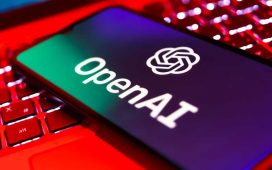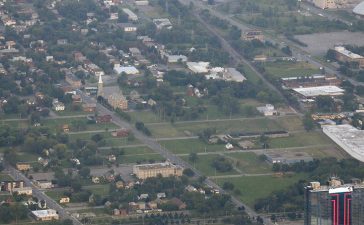Work management platform Asana has announced a new set of AI-based product capabilities designed to accelerate decision-making and improve productivity.
The new capabilities are underpinned by the company’s new AI offering, Asana Intelligence, and come three months after the company added prediction-based AI tools to its platform. The latest host of features combine Asana’s underlying Work Graph data model with large language model (LLM) capabilities offered by OpenAI’s API to help users stay up to speed with ongoing projects.
“[OpenAI’s CEO] Sam Altman was one of the very early investors in Asana and [Asana’s CEO] Dustin Moskovitz has invested in OpenAI, so from the start of LLM technology, we’ve been really plugged in and it’s also helped inform how we built the Work Graph to be able to leverage the technology,” said Alex Hood, chief product officer at Asana.
In order to accelerate decision making, Asana Intelligence monitors team capacity and changing business priorities, surfacing resource recommendations to help teams hit their goals. It can also identify unseen issues and roadblocks that could stop teams progressing toward company objectives.
The new capabilities also aim to boost productivity by creating automated plans based on goals, suggesting and implementing workflow improvements to achieve results faster. Asana Intelligence also provides a writing assistant to improve the clarity and tone of messages and written communications — however, the tool cannot generate content for users, it will simply adjust pre-written content that is plugged into it.
In addition, instant summaries will transcribe and summarize action items and highlights from meetings, tasks, and comment threads.
Users can also ask Asana Intelligence for answers and insights on projects, removing the need to schedule meetings or interrupt someone’s workflow to ask easily answerable questions. Projects will also benefit from the new work organizer which can autogenerate custom fields, smart rules, and suggestions to add structure to projects.
Asana remains sceptical about generative AI
Speaking back in March when Asana announced its predictive AI capabilities, Hood said that there was a danger presented by generative AI, in that content created by artificial intelligence could mean that a company’s official plan of record might not accurately reflect day-to-day operations noting that the large language models most generative AI tools are trained on sometimes proclaim things as fact when they aren’t actually true.
“When you’ve got 16 applications that are all making it very easy to spam the rest of your team with stuff that might only be like 80% correct, that’s a new challenge,” Hood said at the time.
While the new capabilities Asana have launched today technically fall under the scope of generative AI as they use the underlying technology of LLM, Hood stresses that Asana is not rolling out generative AI as it has become known colloquially, because none of the features generate completely new content for users.
“There is going to be a world where there’s more work about work because of generative AI,” Hood said, pointing out that Asana has not provided tools for its customers that will allow them to create or generate content from scratch.
“You’ll notice that our feature sets do not include anything that will create new information for people to go back and check because, as the cost of generating new content goes down, the human cost for all the people who have to review that content is going to explode,” he said. “What we’re trying to do is to help people by summarizing content and helping them to become more efficient.”
Asana outlines its AI principles
Alongside the new capabilities underpinned by Asana Intelligence, Asana has also outlined the set of artificial Intelligence principles that guide its research and development efforts.
“As a company we are committed to using AI in service of helping humanity thrive, this includes ensuring AI safety and transparency in practice and in product. Achieving this vision for the application of AI requires meaningful co-creation between Asana, our customers, and our partners,” the company said in a statement.
Asana’s five guiding principles for human-centered AI include the belief that AI should help people achieve their goals, and be “used in service of augmenting, supporting, and celebrating people’s contributions,” the company said in a document outlining these principles. In addition, Asana has said it is now designing for teams that are made up of both humans and AI, and will be prioritizing its efforts towards fostering the right workflows and partnerships between people and AI.
However, Asana is also working on the principle that people are ultimately accountable for their own decisions and while Asana Intelligence will “assist and enhance human decision-making,” the company believes accountability rests with people and will design its product accordingly.
“We also believe in providing people with choice and control over the role of AI in their work,” Asana said, with Hood adding that when these capabilities become generally available, companies will be given the option to switch the AI technology off.
The final principles guiding Asana’s development of AI is a commitment to safety and transparency, with the company saying it will prioritize safety and security with AI providers and take the same approach while developing AI solutions.
Transparency is also fundamental to Asana’s product ethos, and the company is committed “to being open and clear about our partnerships, security, data collection, data protection, and management practices.”
“We’re building products that allows AI and humans alike to unpack their thinking and assumptions so that we can strengthen our collective thought processes and foster trust and build on each other’s ideas, and not build on ideas that may or not, may or may not be incorrect,” Hood said.
Copyright © 2023 IDG Communications, Inc.












